Goa stands out for many features: it is a small part of western India, a completely different confederate state from the rest of the country. As a result of Portuguese domination, it has more churches than temples, and in the 60s and 70s, it became a favorite place of artists and hippies from all over the world, combined with Goa trance, music that goes beyond rave parties on the beach. In addition to the height, there are many other things, such as untouched nature and historical heritage, that make this place truly magical.
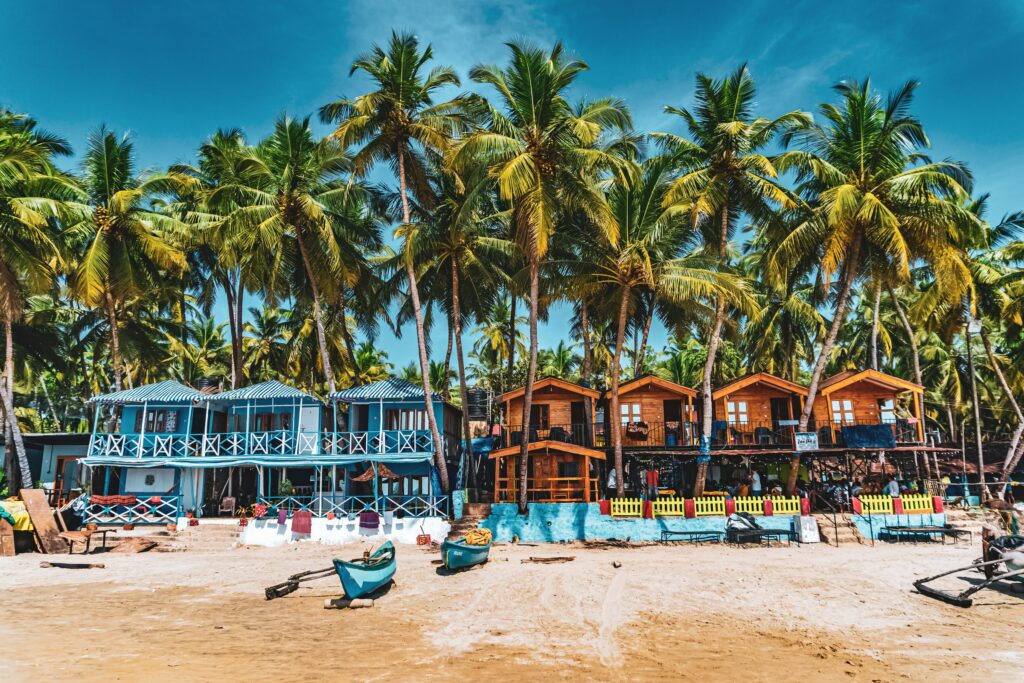
What can you see in Goa? Discover a mix of unique cultures of the world from Indian temples to Portuguese neighborhoods and palaces!
Old Goa
A magnificent past that can still be admired today. When the population of Old Goa exceeded the population of cities such as Lisbon or London, the former capital began to be considered the “Rome of the East”. You can still feel this grandeur as you stroll through what remains of the city, with its imposing churches, cathedrals, and majestic monasteries. Its growth under Portuguese rule since 1510 was rapid, but epidemics of cholera and malaria forced the population to leave the city in the 17th century. In 1843, the capital was officially moved to Panaji.
Some of the most impressive churches and cathedrals are still in use and well preserved, while other historic buildings have turned into museums or just ruins. It’s an exciting day trip, but it’s often crowded here, so it’s best to visit it on a weekday morning. We can start with the Basilica of Bom Jesus, famous for the fact that it houses the remains of the Spanish Jesuit Saint Francis Xavier.
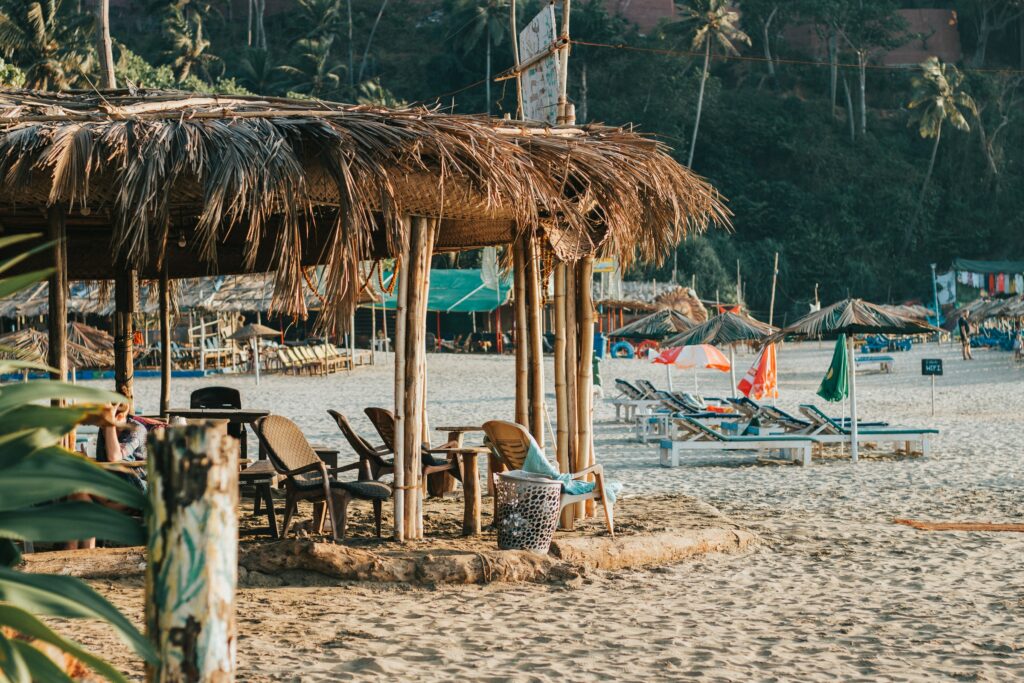
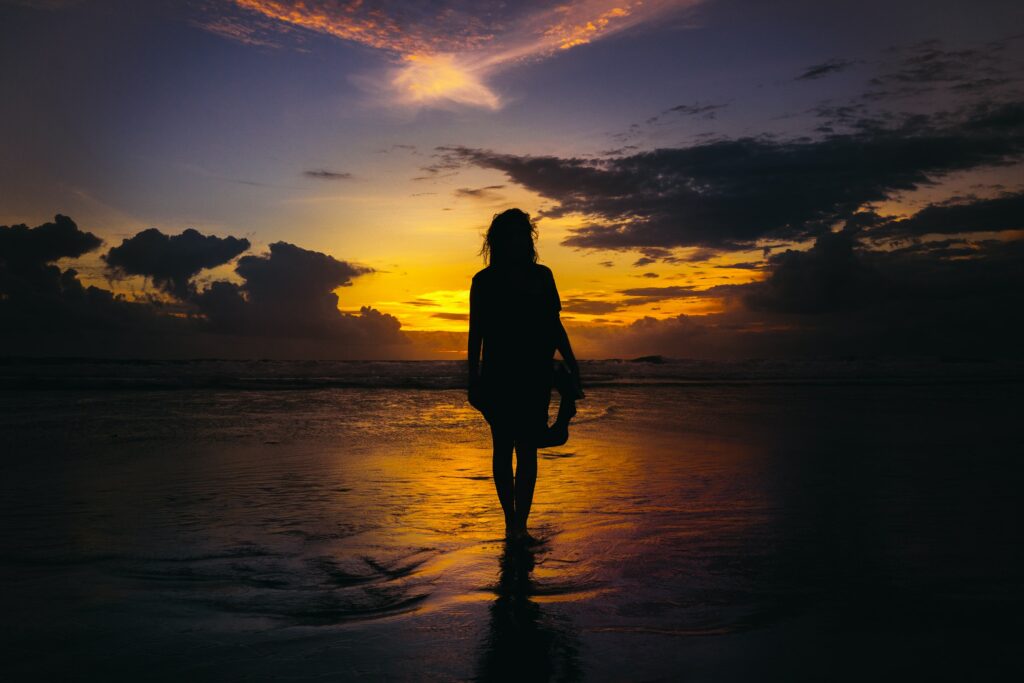
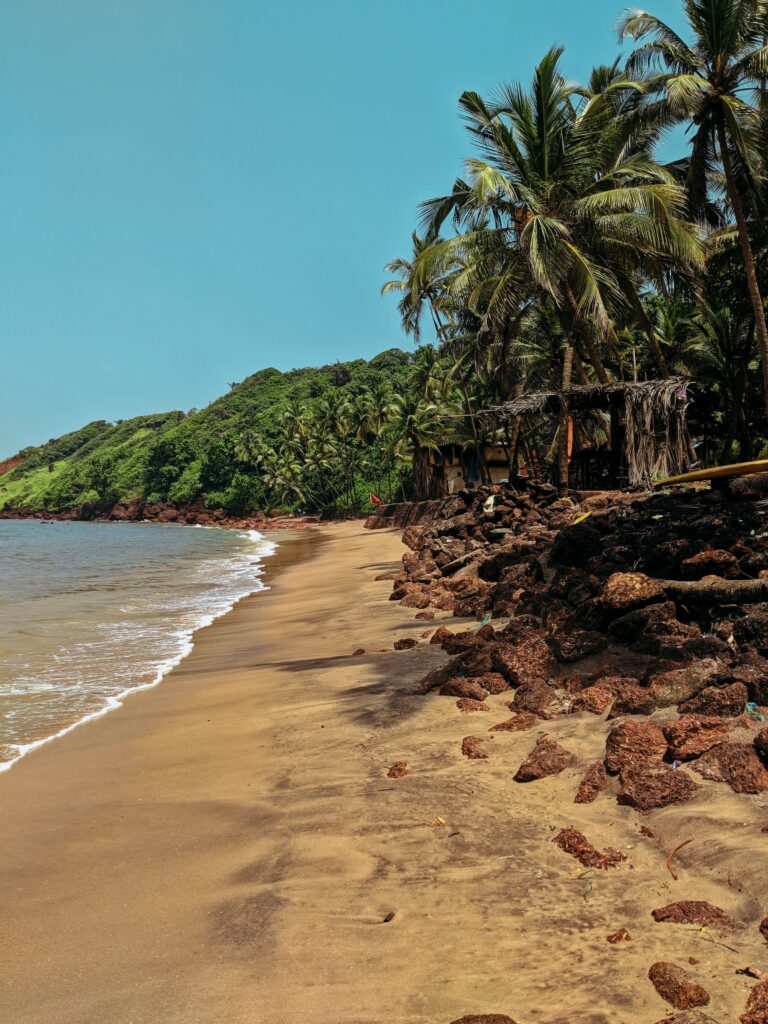
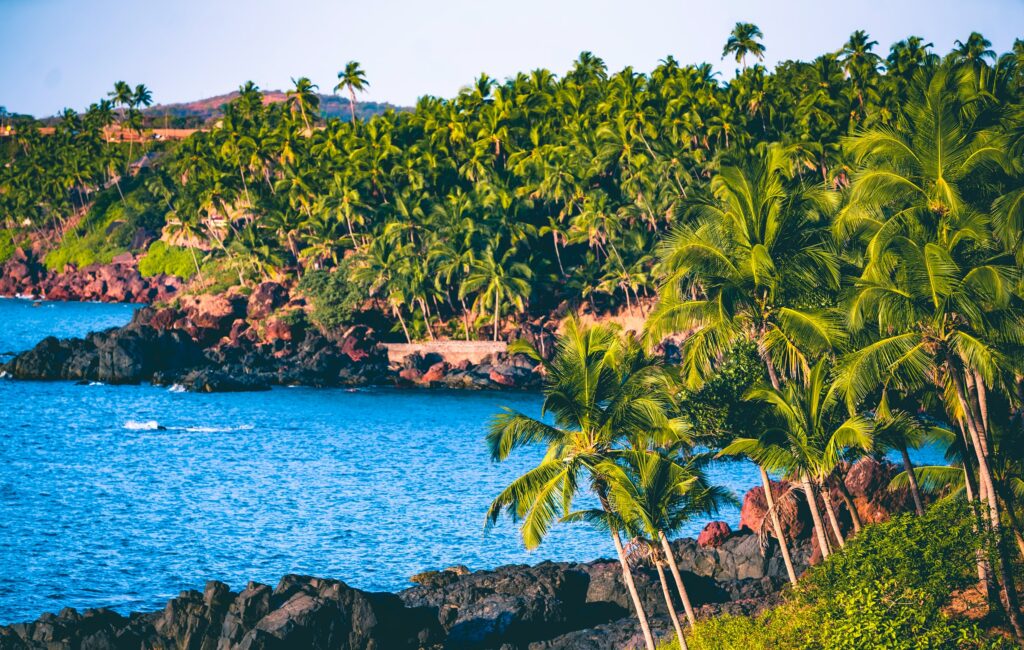
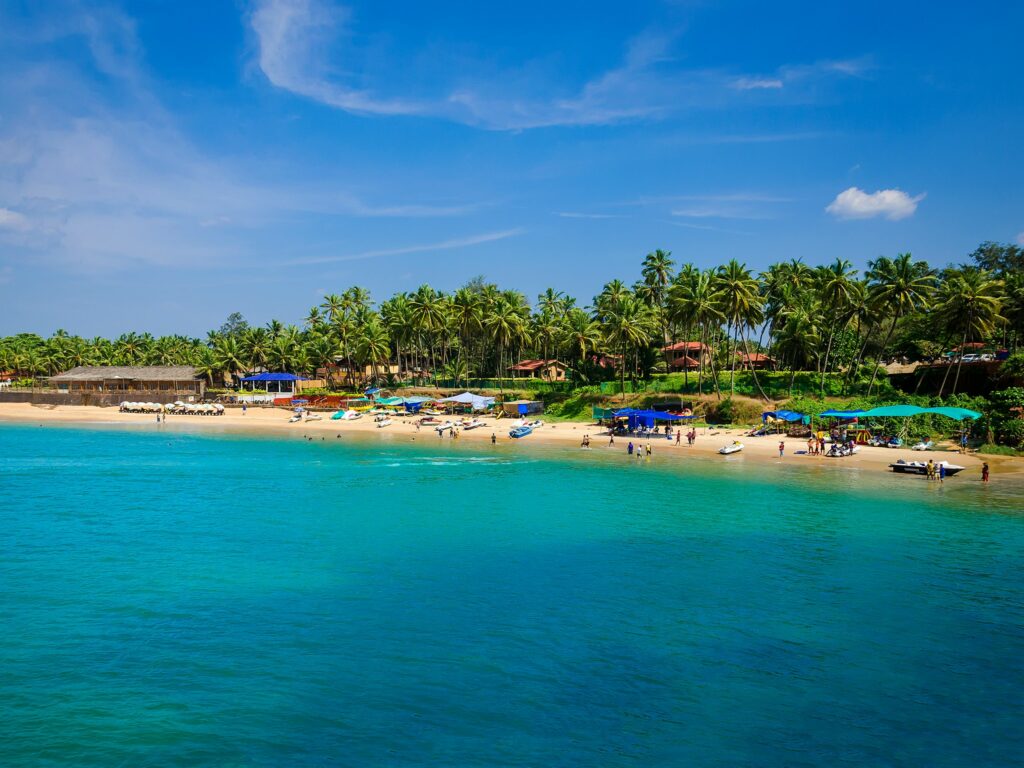
It is considered the best example of Baroque architecture in the country and was completed in 1605. Today it is one of the most famous places in Old Goa. The Coe Cathedral, on the other hand, is the largest church in all of Asia. Built-in 1563, one of its most famous features is the large “Golden Bell”. The crumbling remains of the Church of St. Augustine in ancient Goa are a perfect metaphor for the end of Portuguese colonization. All that remains is a 46—meter-high tower that was once the bell tower of the building. The church was built in the early 1600s before it fell into disrepair and gradually collapsed between 1842 and 1938. The bell is still ringing today in the Church of the Immaculate Conception of Our Lady in Panaji.
Another place of worship: is the Church of San Caetano, built according to the original design of St. Peter’s Basilica in Rome. Therefore, it has an impressive white facade next to the Mandovi River, a few steps from the Cathedral of Ce. It is also worth visiting the Archaeological Museum, a gallery of portraits collected in a single space, many artifacts, sculptures, and objects of Portuguese rule, distributed in eight galleries, which also cover the prehistoric era of Goa.
Shantadurga Hindu Temple
Most of the temples are located downstream, but this is an outstanding example, on a hillside with an attractive view of white towers and red roofs sparkling in the greenery of nature. It was built by Shahurajit, the ruler of Satara, in 1738. Located 33 km from Panaji, Sri Shantadurga Temple has an imposing statue of the goddess Sri Durga, the one who mediated between Sri Vishnu and Sri Shiva to stop the fierce war between them. She is surrounded on both sides by Vishnu and Shiva. The temples of Sri Shantadurga and Sri Mangesh, the two most revered patron deities of the Hindu Brahmin community of Goud Saraswat, are located respectively in Kavlem and Mangeshi in the Ponda district in north Goa.
The current structure of the temple was built in the period from 1713 AD to 1738 AD. Since then, many repairs have been carried out in the main temple and temples of other deities in addition to the Agarshala (guest house) built on three sides of the temple. Its structure includes a large dome with an elegant miniature hall and a sparkling white six-story tower that stands out on the facade decorated with terracotta flowers. The rest is steeply pitched red tiled pyramids. The main atrium of the temple is decorated with wooden doors with a silver coating.
In the lobby, there is a large statue of Hanuman, the monkey god, a faithful servant of Rama, along with Garuda and Mount Vishnu. The doors lead to a beautifully decorated Mandapa with large columns on the sides; the ceiling is decorated with chandeliers, and temple bells, in front of the sanctuary there is a unique silver screen divided into three parts. At night, the candelabra forms rays of shining light that reflect on the marble, creating an amazing effect.
Cathedral of Sé
Ce Catedral de Santa Catarina is the cathedral of the Diocese of Goa and Daman. This is a historic building built in the style of Portuguese Manueline. The church has a length of 76 meters and a facade height of about 35 meters. It was built by the Portuguese, who ruled Goa at that time and is considered the largest on the continent. The word “I” means “to see.” It was a symbolic structure built in honor of the Portuguese victory over the invading Muslim army in the early 16th century.
The exact day of this victory is celebrated in this church as the feast of St. Catherine. In the middle of the 15th century, the then governor of Goa began to expand the structure, and the construction was completed in the middle of the 17th century. This structure had two towers. After 120 years since the year of construction and several attacks, one of the towers has not been restored. In the 20th century, Pope Pius XII awarded the cathedral with an honorary “Golden Rose”, which is now located on the grave of St. Francis Xavier inside the cathedral.
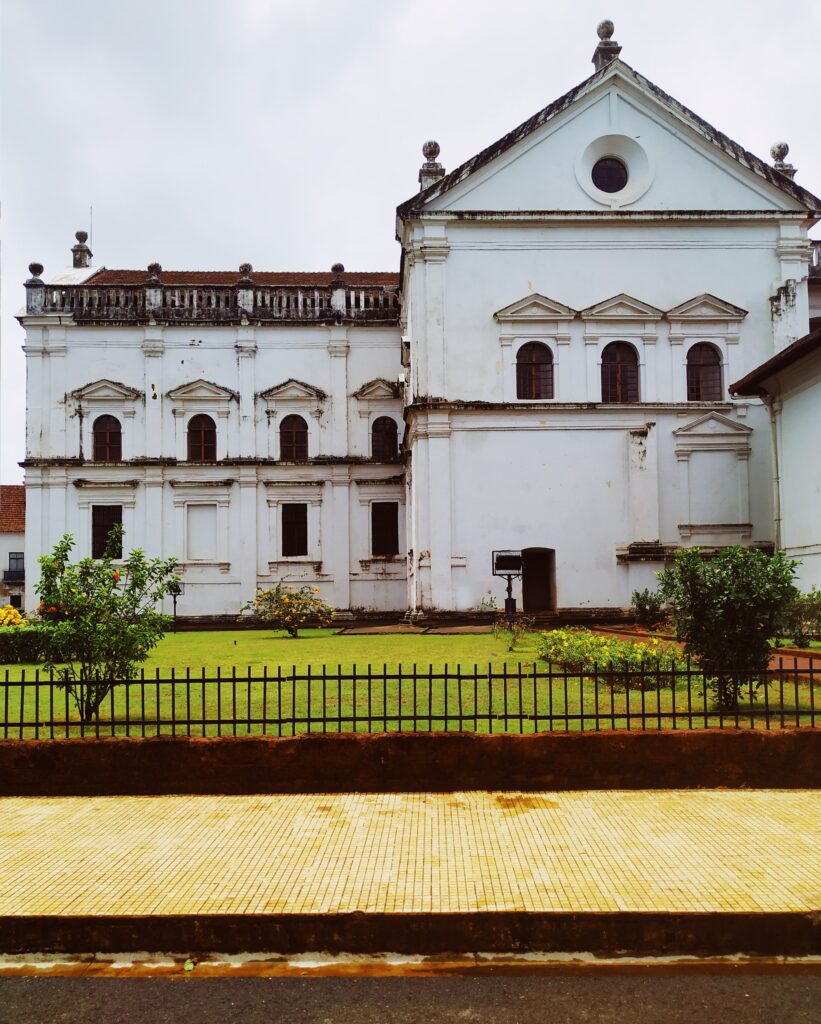
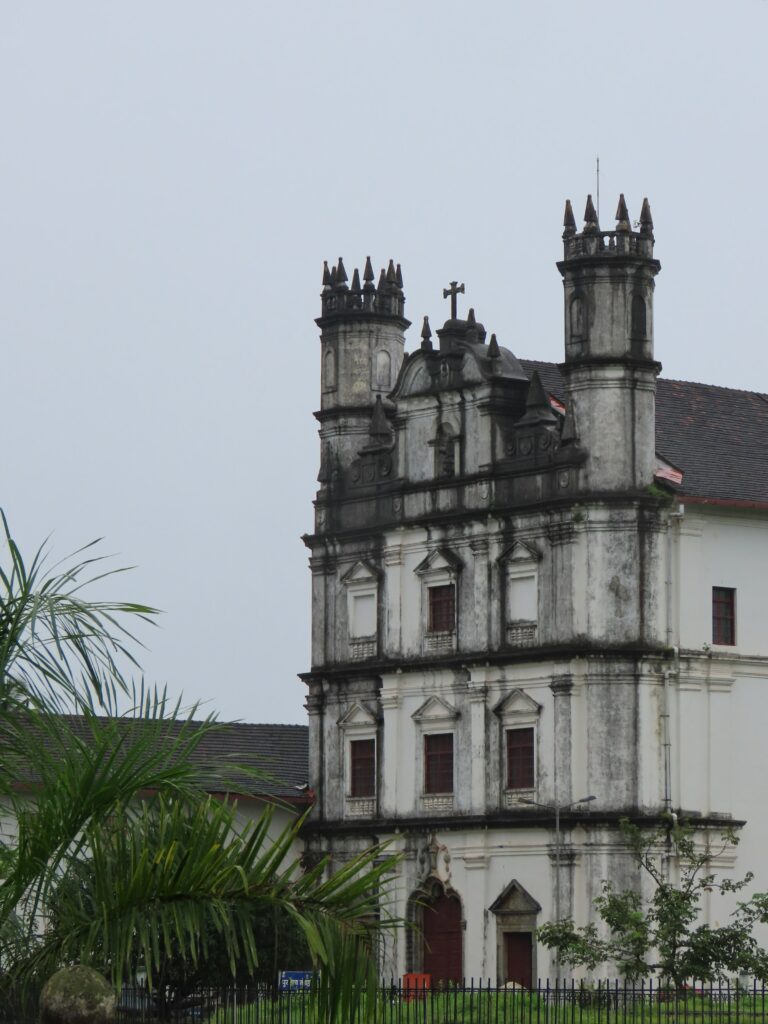
In the Cathedral of Xie, there is a large Golden bell, known not only for its noble material but also for its strong sound. It is said to be one of the best bells in the world and the largest in Goa. The main altar of the church stands as a dedication to Santa Caterina d’Alessandria. Numerous paintings can be found on the sides of the altar. Just behind the altar is the Chapel of the Miracle Cross. It is said that it was in this place that the vision of Christ appeared in the middle of the cross in the XVII century. The church has six panels with relief scenes from the life of St. Catherine and the great baptism. Since the 16th century, it has been used by Saint Francis Xavier for the baptism of numerous Goans converted to Christianity.
The main entrance is decorated with Latin inscriptions on Corinthian columns. Two of the eight chapels are decorated with decorative perforated wooden screens. This filigree work gives this place a regal look. The Chapel of the Holy Communion is famous for the decoration of painted walls and ceilings. The arches of the altars are decorated with ancient paintings. Next to the altar, there is an organ of the 18th century, which is still in use and has a carved stand made of ebony. This is part of the old church on which the new cathedral was built. Closer to the cathedral is a convent, which has been transformed into an Archaeological Museum.
Basilica of Bom Jesus
Located in Old Goa, the Basilica of Bom Jesus was built in 1605 AD and contains a tomb with the remains of St. Francis Xavier. It is a monument with classical forms of architecture introduced by the Jesuits. This is the only church in old Goa that is not plastered on the outside, but despite this, the facade is a magnificent example of Baroque architecture, combining elements of Doric, Ionic, and Corinthian styles. The interior of the church is a set of contrasts. The design itself is simple, but the floor is covered with the best marble and inlaid with precious stones.
Behind the main altar is a huge statue of St. Ignatius of Loyola, the founder (together with St. Francis Xavier) The Society of Jesus, and under it is a small image of the Bom Jesus (Baby Jesus), the patron saint of the church. On the south side is the chapel of San Francesco Saverio. It has gilded columns and floral decorations carved from wood. The relics of the saint are kept here. The basilica also contains a contemporary art gallery with paintings depicting various biblical scenes.
Panaji
If you want to escape from the busy beaches of Goa to explore the history and culture, visit the capital of Panaji. It is part of the Tiswadi Taluka of North Goa and is located on an island bordered by the Mandovi River to the north and the Zuari River to the south, and offers an eclectic mix of temples, churches, historical buildings, and walks. Panaji is a city of art lovers; it breathes art. Thanks to the many architectural wonders and colorful neighborhoods, this heritage seems to have inspired a huge number of artists. In addition to the opportunity to explore the rich art galleries, you can visit no less wonderful cafes. The city is naturally suitable for long walks, which is the best way to explore it. Even with rented bicycles.
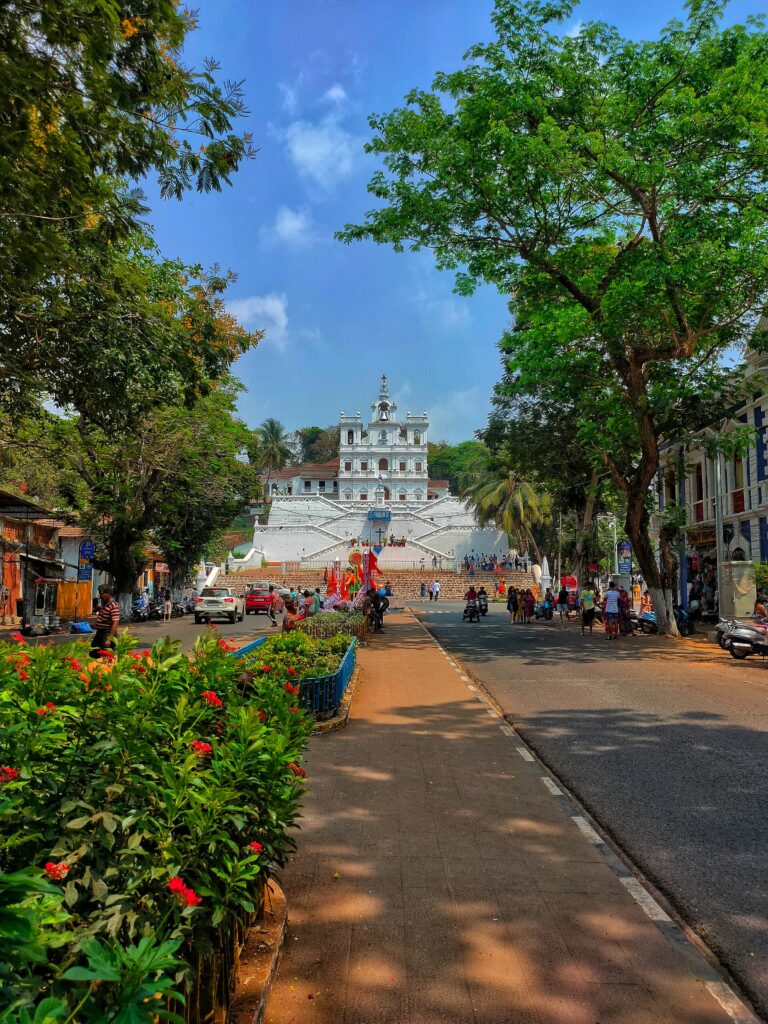
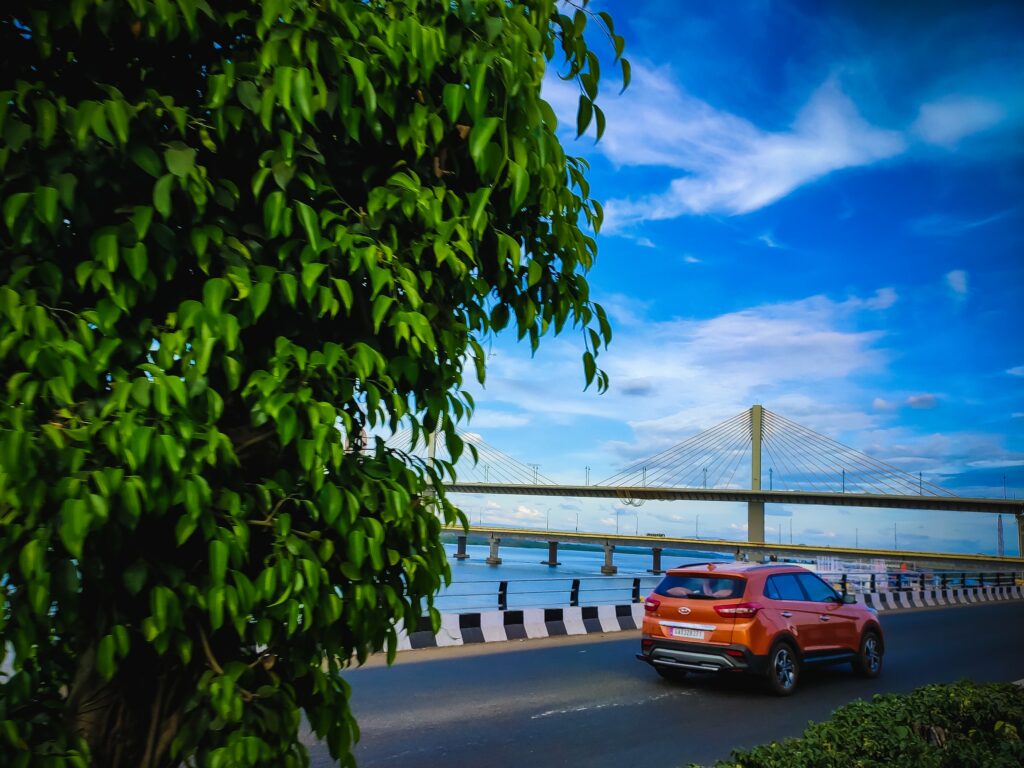
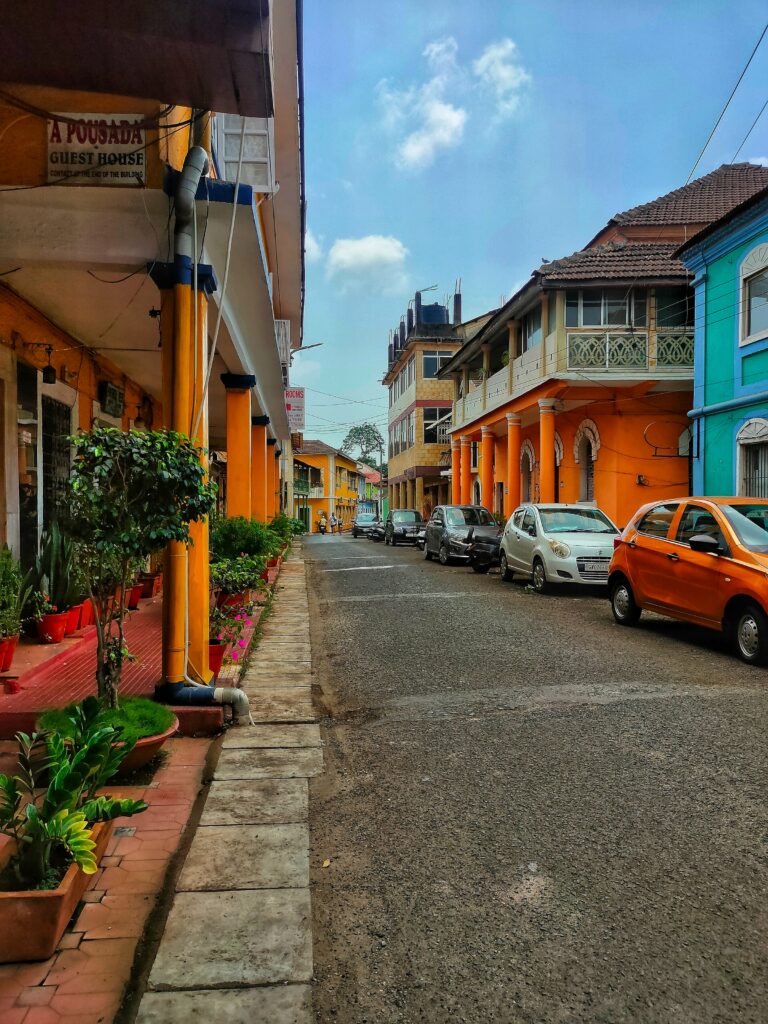
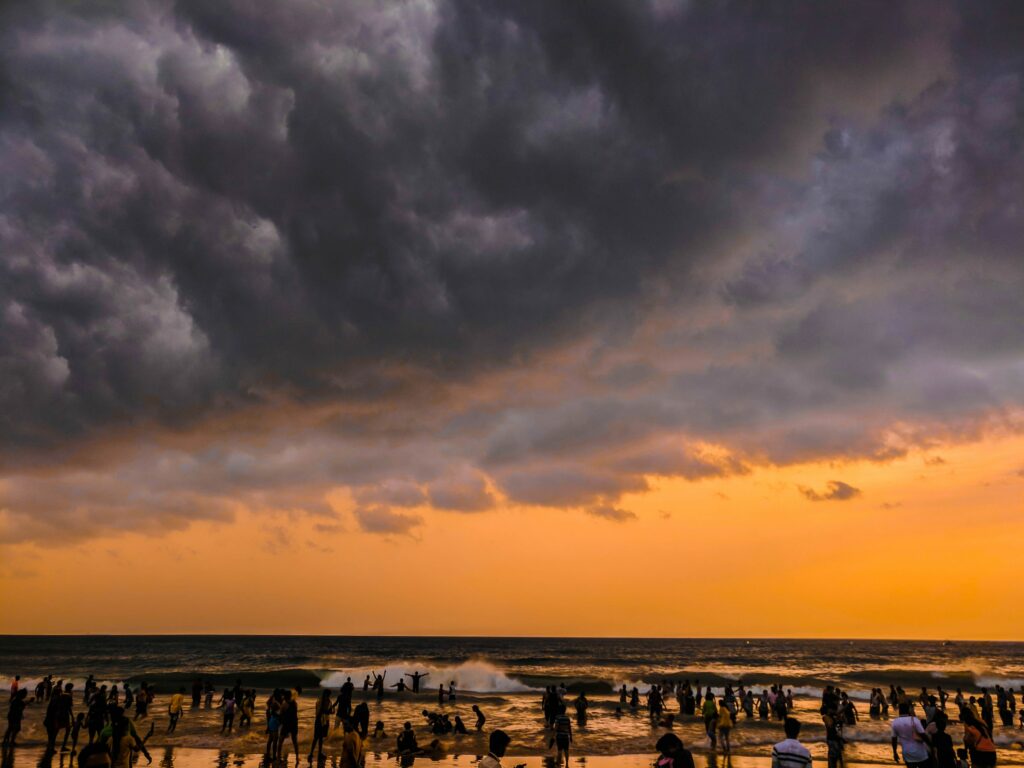
The Goa State Museum, also known as the State Archaeological Museum, houses antiques, art objects, and objects of cultural significance. Currently, the museum has more than two dozen galleries on various subjects: sculpture, Christian art, the history of printing, religion, cultural anthropology, contemporary art, numismatics, the history of the struggle for freedom in Goa, furniture, natural heritage, environment, and development. There is a collection for almost every social background. The museum is an excellent educational center that you must visit to understand Goa, its culture, and its rich history. But there are also many other attractions, starting with the temples of Mala and Maruti.
In practice, Ce Fonteinhas and Sao Tome are Christian areas, while Mala, located next to them, is pre-Portuguese-Hindu. And again: here is the Mahalakshmi Temple. Are you surprised to find the famous Hindu temple in Panaji? This is a rarity. In Sunaparanta we find other forms of self-expression: photography, painting, poetry, music, theater, exhibitions, and conferences. Materials from all over India and around the world find a place in this international city, and Sunaparanta, the “land of gold”, is the perfect reference point. A walk through the streets, a collision with the Bishop’s Palace, then with the Church of the Immaculate Conception of the Mother of God.
Mangeshi Temple
Every year it is visited by a large number of local, national and foreign tourists. The temple has both historical and religious significance. Its current location in Priol was never the original location of the Mangeshi temple. The story goes that the Portuguese destroyed nearby temples. And to save the deity who was worshipped in the temple, he was smuggled from the Portuguese territory of Kusastali (today Kortalim) to Priol, in the Pond area. An exiled Goa citizen named Ramchandra Sukhtankar achieved a high position at the court of the Marathas of Pune.
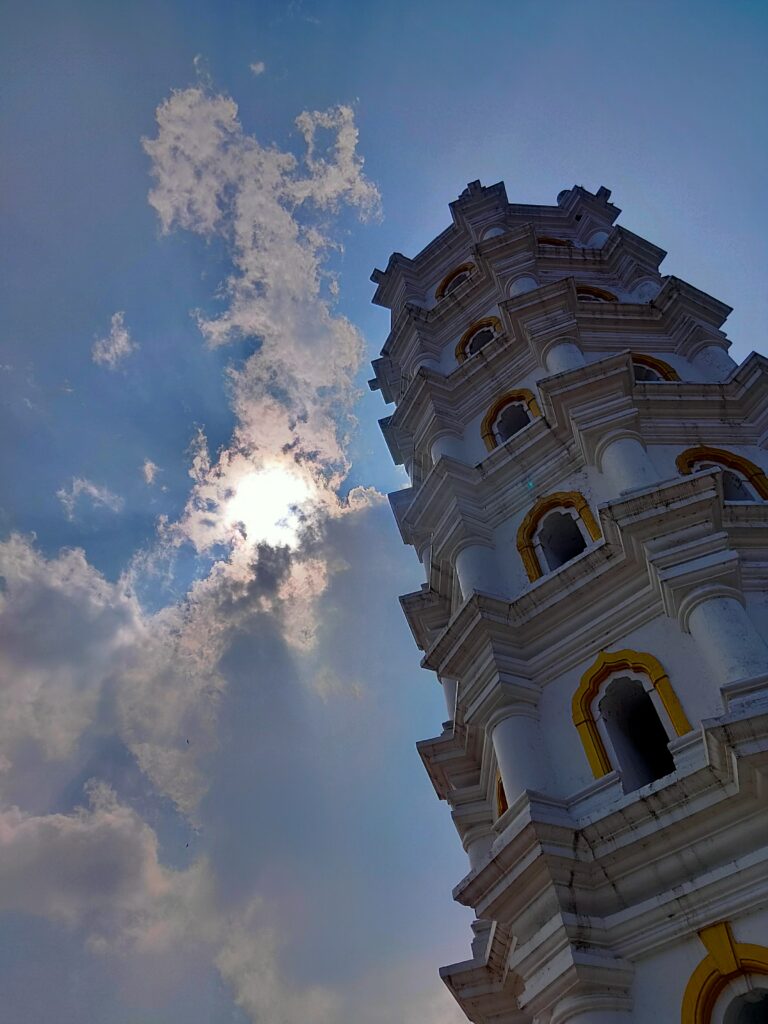
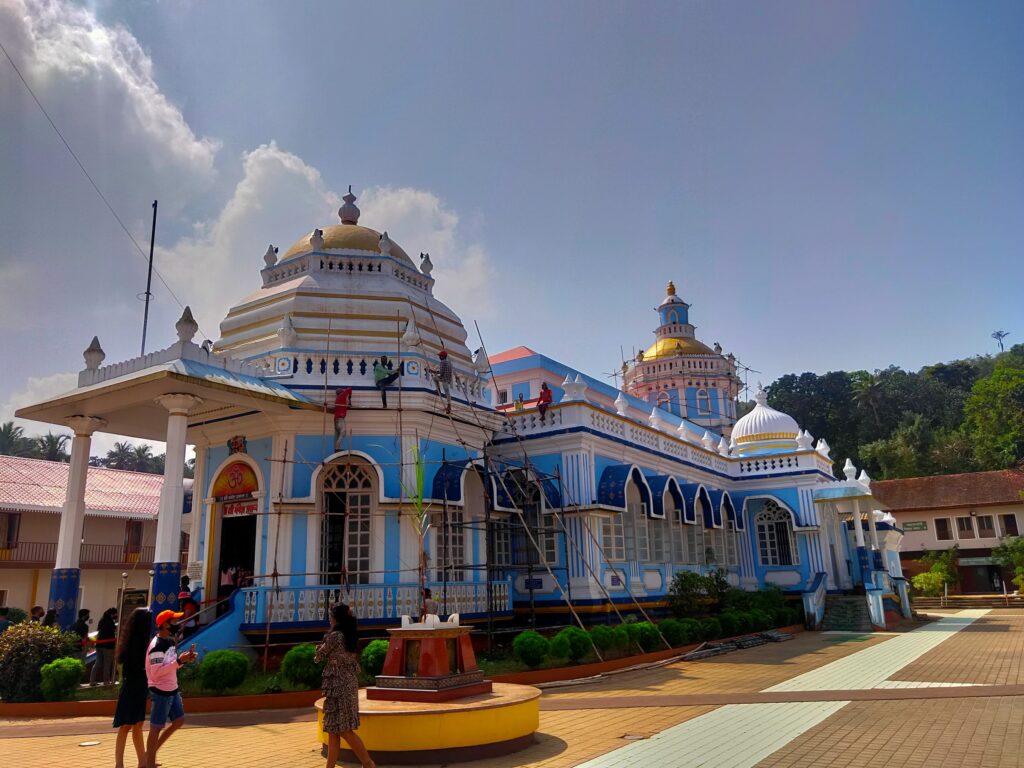
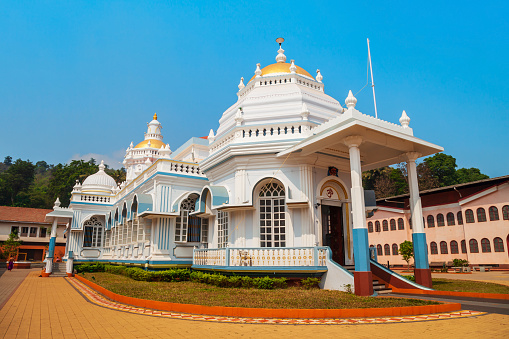
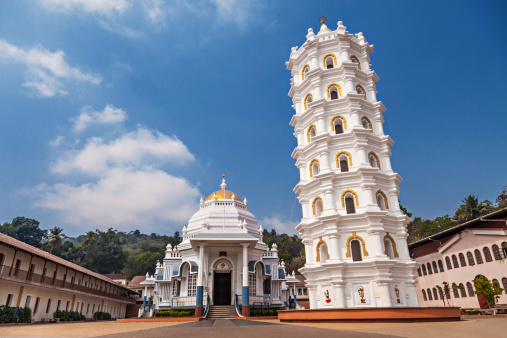
Using his weight, Ramchandra persuaded the Raja of Sunda, a vassal of the Maratha Empire, to donate enough land for the construction and maintenance of the temple. Under this influence, the current structure of the temple was built, and enough land was donated to the temple for its maintenance. Even today it is a self-sufficient and organized education. Its central courtyard overlooks a reservoir surrounded by a typical oil lamp tower. Inside is the Shiva lingam and the golden Shesha, the divine serpent supporting the universe with its different heads.
The story goes that while playing dice, Shiva lost everything he had, even his house on Mount Kailasa in the Himalayas. He left his home and headed to south India and reached Goa. He decided to stay there and meditate. His wife Parvati, broken and lonely, came looking for him. Moving through the dense forests of Goa, he encountered a tiger. The tiger turned into Shiva. The villagers of Kushastali (now Kortalim) soon built a temple in which he could be accommodated.
Dudhasagar Waterfall
A majestic waterfall of clear water flowing down from a sheer mountain wall from an impressive height. It is both breathtaking and attractive, it makes us realize that many forces in nature are more powerful than the human mind and body. Waterfalls are at their peak during the rainy season, although they are popular all year round. It is located in the Sanguem Taluka of Goa. It can be reached by car or by train to the Kulem railway station, and then on foot to the waterfall; however, you still have to walk to the base.
The name Dudhsagar translates as “milk sea”, which, according to many, is an allusion to the white spray and foam that the great waterfall creates when it plunges into the lake. Legend also says that once there lived a princess, the daughter of the king of the Ghats.
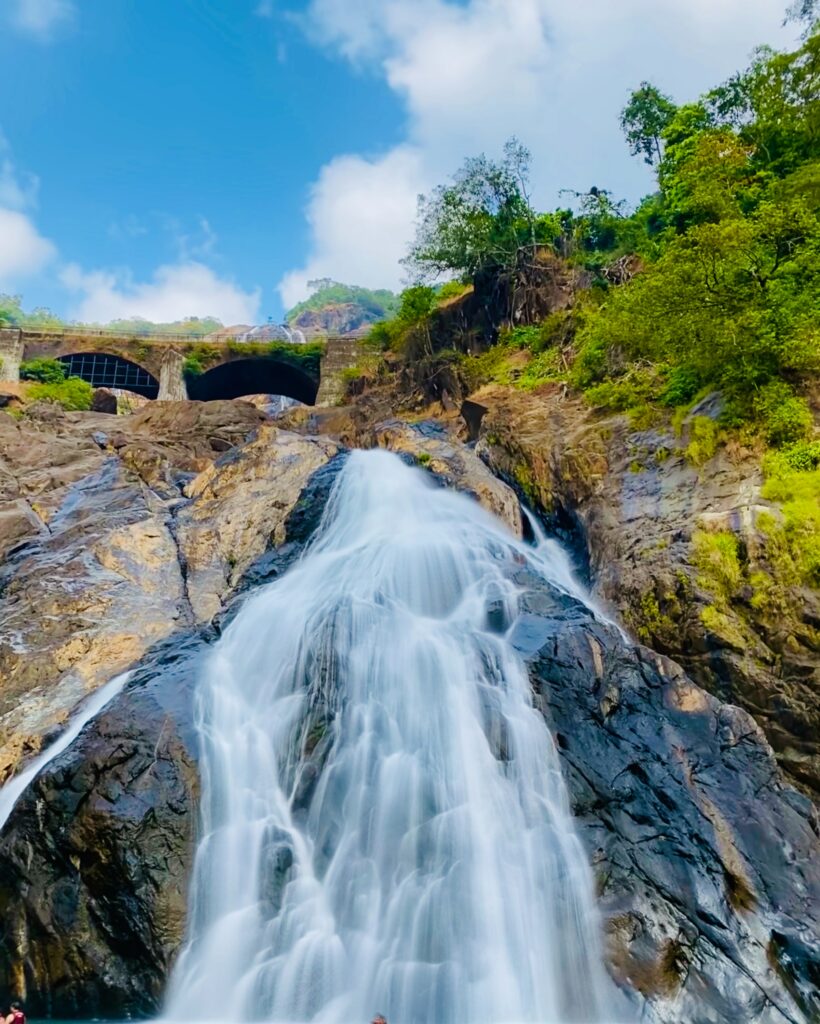
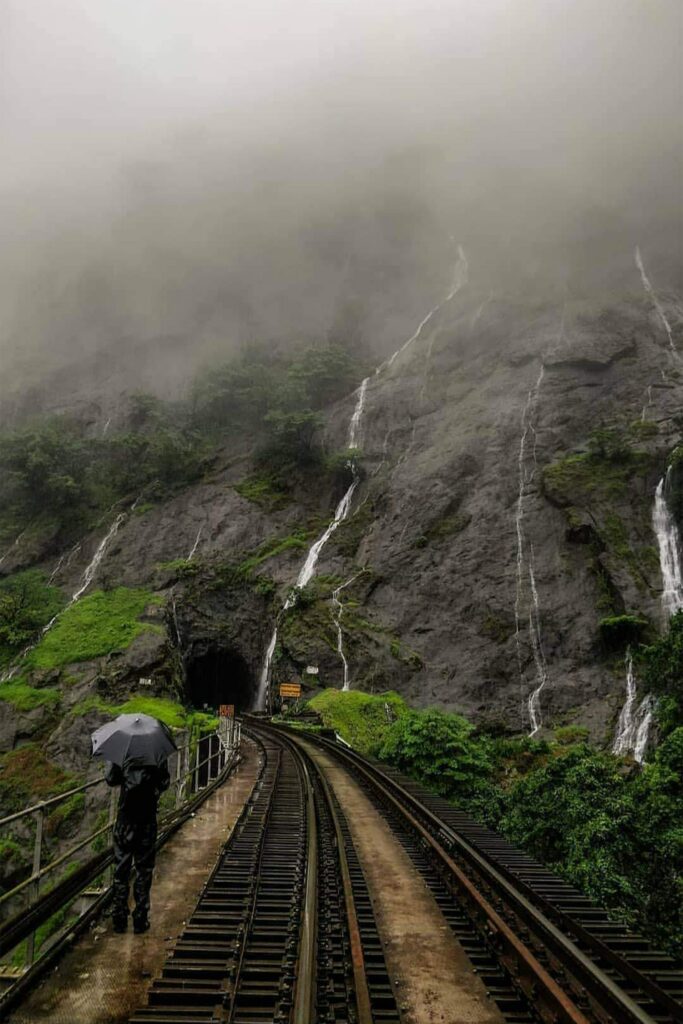
This young woman was as modest as she was beautiful and believed in the purity of heart, mind, and body. Legend has it that every day she swam in the lake near her father’s castle. After bathing, she and her maids gathered on the shore of the lake, and the princess drank a jug of milk.
It is said that the jug was made of pure gold and encrusted with sparkling diamonds. One day, when the princess was drinking milk, a handsome young prince was making his way through the nearby forest. Hearing the laughter and chatter of the women, he stopped to look. He was very impressed with the princess’ revealing swimsuit, and her maids poured milk into the waterfall in front of her, thus creating a curtain behind which she could wear her clothes. This milk cascade, which has preserved the beauty of the princess, is the meaning of the Dudhsagar Waterfall.
Mandovi is the main river of Goa and originates on the Deccan plateau in Karnataka. It winds through the Western Ghats and falls from the highest peaks on the border of Goa and Karnataka, thus forming the Dudhsagar Waterfall. The waters create a green pool at the base of the waterfall and then continue to move west to join the Arabian Sea. Dudhsagar Waterfall reaches an impressive 310 meters in height. It splits into three streams when it flows along an almost vertical cliff, forming a truly magnificent sight. This waterfall is also known as Tambdi Surla among some locals. The area around the waterfall is covered with forest and is part of the Bhagwan Mahavir Wildlife Sanctuary.
Fort Aguada
Standing on the crumbling ramparts of what was once the most formidable and impregnable of the Portuguese forts in India, a panoramic view of the ocean opens, testifying to the confluence of the Mandovi River and the Arabian Sea, which the fort continues to observe for more than four hundred years. It is such a majestic sight that it is easy to imagine a Portuguese galleon on the horizon, on the last leg of a difficult journey from distant Portugal around the Cape of Good Hope, on the verge of finding a safe harbor and resupply.
Fort Aguada is a monument of Portuguese construction and engineering. Although some parts of it collapsed over time, most of it remained intact and today remains the best preserved Portuguese fort in India. Built over three years from 1609 to 1612, it once defended the fortress from Dutch and Arab invaders. Named after the freshwater spring that constantly provides the fort with drinking water, “agua” means “water” and “Aguada” is the place where water is collected.
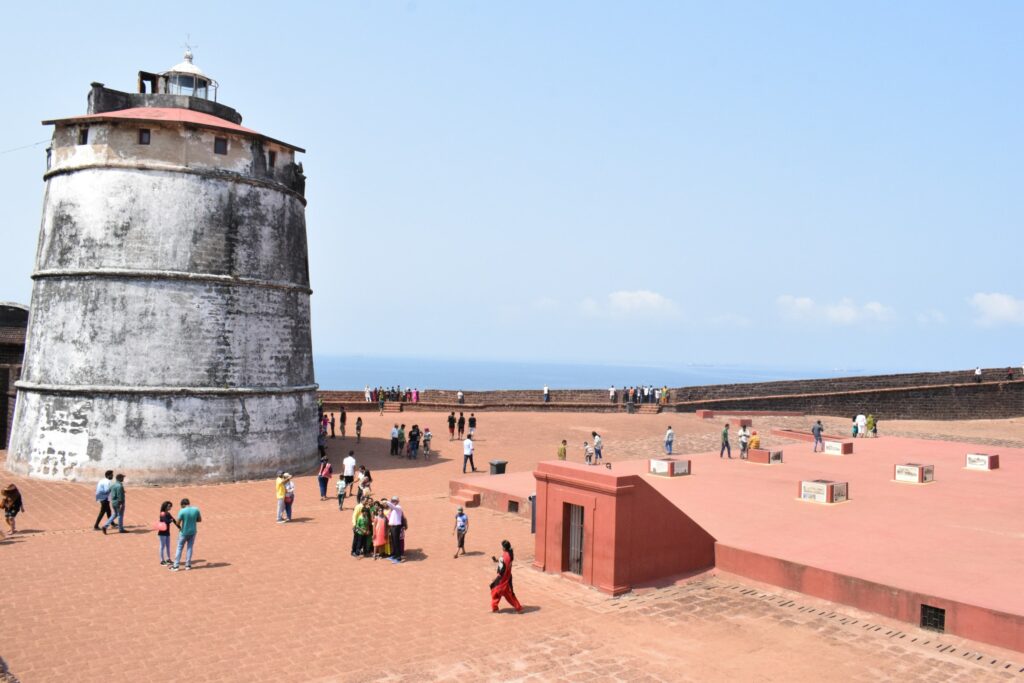
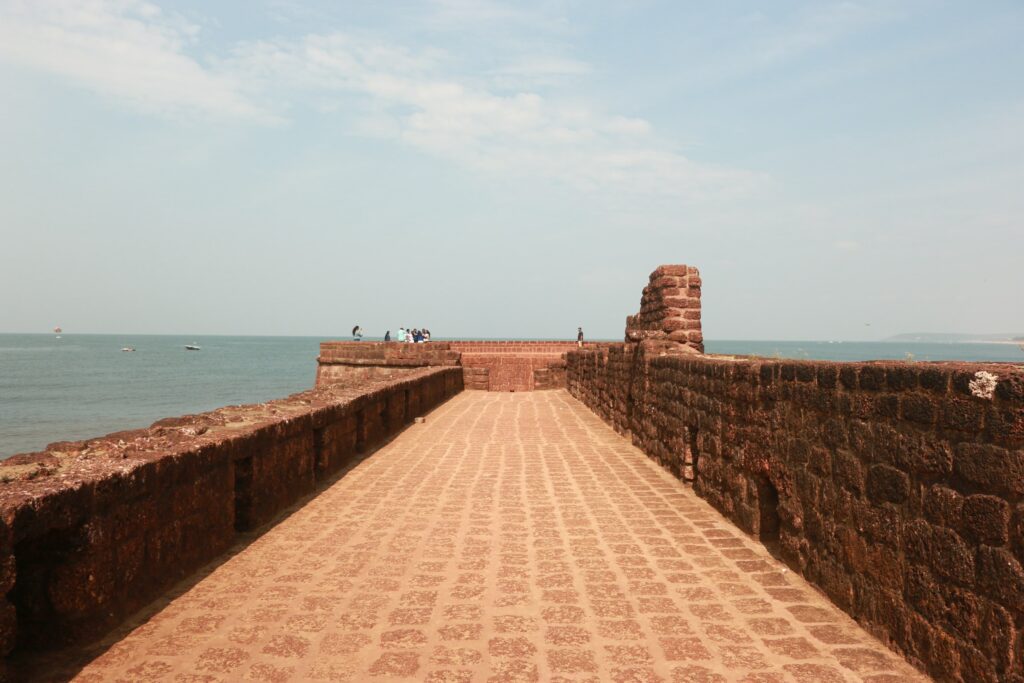
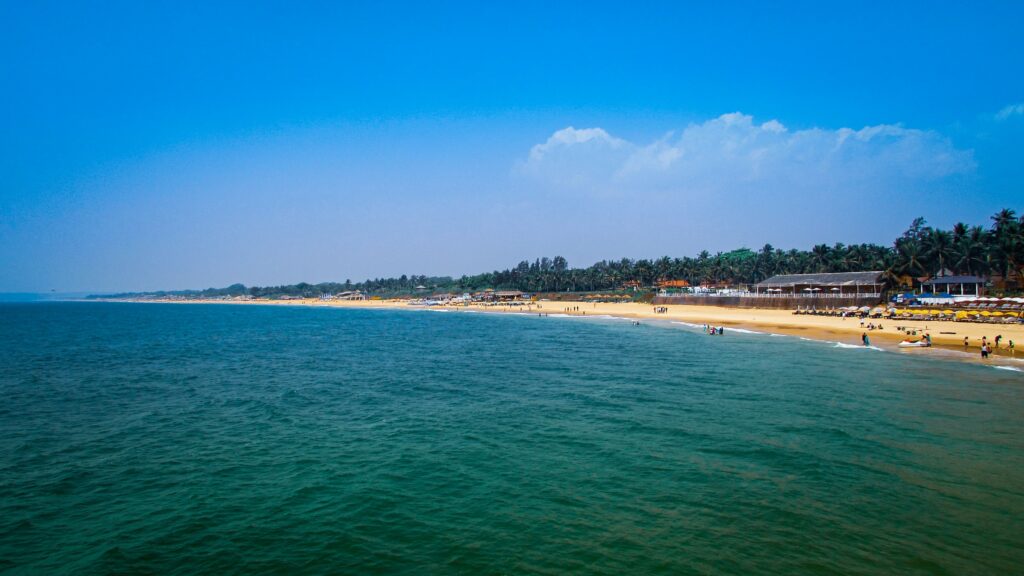
This fort was so well built and fiercely armed that it never fell into enemy hands. This is a typical example of military architecture. Built of the durable laterite stone so easily accessible throughout Goa, its massive bastions over 5 meters high and 1.3 meters thick have stood the test of time, fierce storms, and monsoon winds. The fort covers the entire peninsula and is built using the natural landscape to make it harder to break down its walls.
In addition to a huge cistern that could store more than 2 million liters of water, the fort also contained a formidable citadel, secret passages, and a capacity of up to 200 cannons. Fort Aguada also boasts a four-story lighthouse built in 1864, the oldest lighthouse in Asia. Although it fell out of use in 1976 and is often closed to the public, a new lighthouse has been built closer to the edge of the cliff, called the Aguada Lighthouse.
You can access and enjoy the view of the fort’s surroundings from there. Part of the fort has been converted into Aguada Prison, one of Goa’s largest prisons. No visit to the fort will be complete without a visit to the church of San Lorenzo, the patron saint of sailors. It was built right on the outskirts of the fort because the Portuguese used it as a tactic to prevent the ramparts from being shelled by enemy fire from close range.
Calangute Beach
They say Calangute is the road to paradise. Surrounded by palm and coconut palms, the beach stretches along the Arabian Sea near Panaji. Calangute Beach, located near the village of Candolim, is a real attraction in Goa. Due to its incredible beauty and serenity, it is known as the “Queen of Beaches”. It is one of the top ten beaches for swimming in the world, during the day it remains crowded with both tourists and locals.
An ideal place for tourists, filled with souvenir stalls, stalls selling everything from beer to trinkets. All these details add to the popularity of the beach, making it a place to visit. The beach has a typical Goan atmosphere. Those who are looking for romantic solitude can happily organize a vacation in Calangute because it is an ideal place for nature lovers, just a dream.
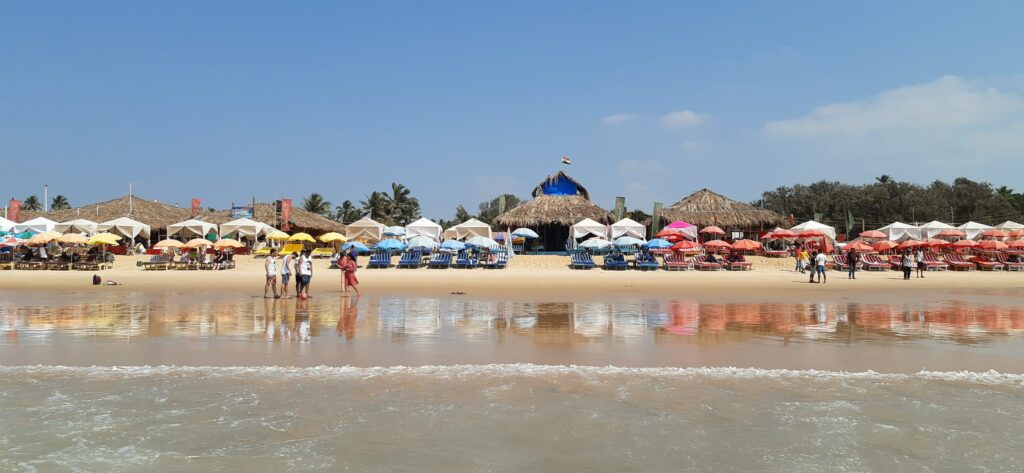
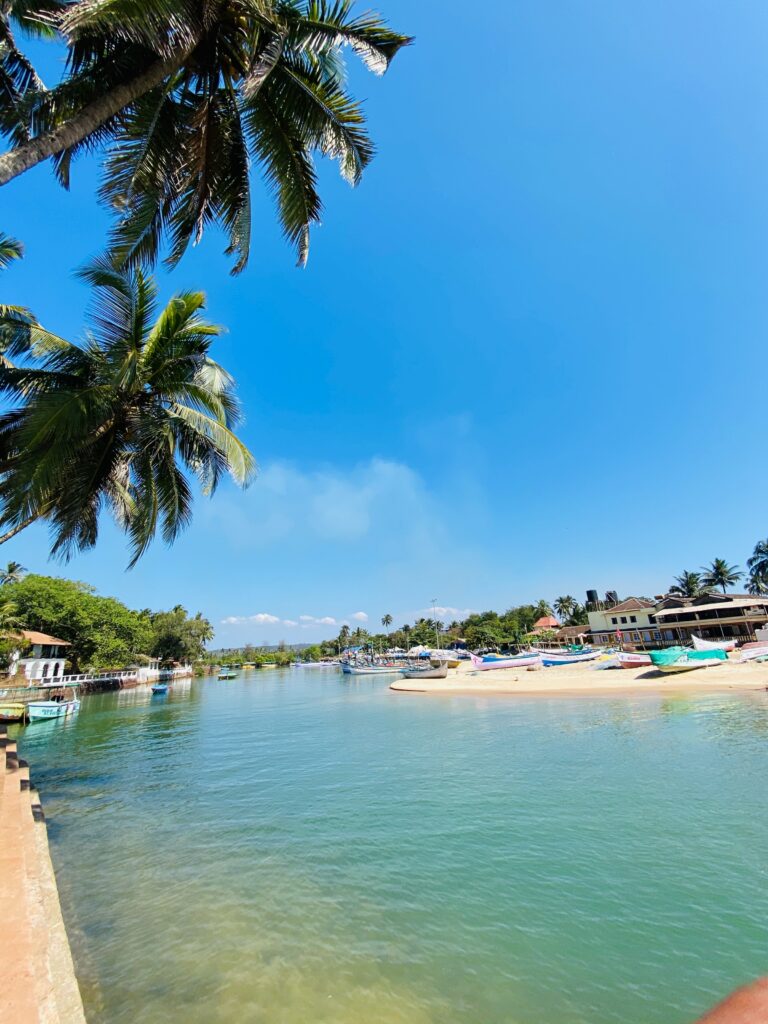
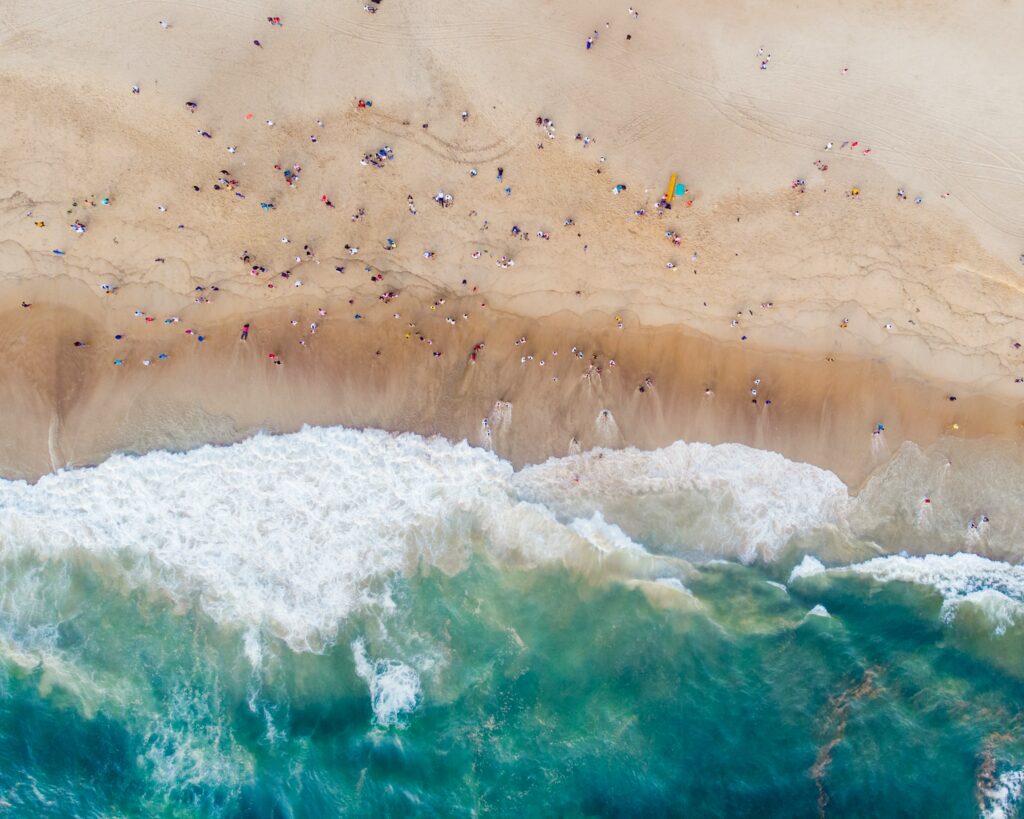













I’ve been wanting to see India for ages now. When I finally bought tickets the pandemic started so I had to postpone for two long years. The wait was excruciating but I was hopeful it would soon be over and I could visit. Now everything is booked and I honestly can not wait, such an amazing country! I will be there for almost a month. Goa and Hampi are the only two places on my itinerary for South India so far.
Goa is just like you expect it: colorful, cultural-rich and breathtakingly beautiful. As one of India’s richest states, Goa has an opulence and easiness that is not present throughout all of India. One of the best memories so far for us, worth the long flight and all the stress with our luggage.
Their public transportation gives me severe anxiety, way too crowded for my taste so we resorted to a second best choice: rented a scooter. If you want a more relaxed, quite vacay, stay in the south area, otherwise go with the northside of Goa, this is where the fun, party and cool restaurants are. On this note, I couldn’t help but be surprised at how cheap their drinks are aka be careful as you can easily get wasted after a night out, especially if you’re with friends.